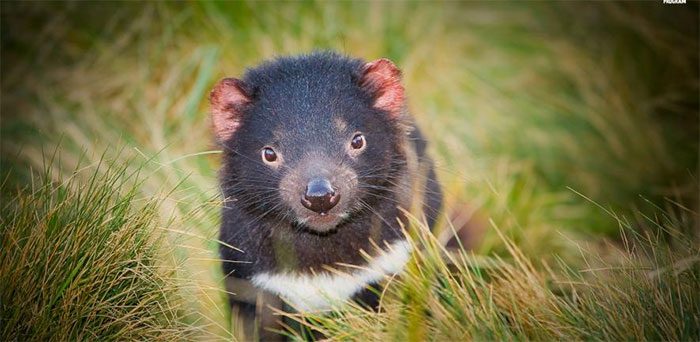Australia has recently welcomed the birth of Tasmanian devils, a carnivorous marsupial species belonging to the Dasyuridae family, after approximately 3,000 years since this species disappeared from the mainland.
This exciting news is raising hopes for the successful prospects of the reintroduction and breeding plan for Tasmanian devils in the wild.

Tasmanian devil, a carnivorous marsupial belonging to the Dasyuridae family. (Photo: cam.ac.uk).
In a statement on May 25, conservationists at the Aussie Ark Zoo and a coalition of other conservation groups in Australia announced that 7 Tasmanian devils had been born at the 400-hectare sanctuary in Barrington Tops, north of Sydney. Park rangers inspected the pouches of the female Tasmanian devils and found the joeys to be in good health.
This information was released in the context of last year’s efforts when conservationists released 26 adult Tasmanian devils into the wild in mainland Australia, where they had gone extinct about 3,000 years ago. The conservationists described this as a “historic” project, similar to the reemergence of gray wolves in Yellowstone National Park in the United States during the 1990s.
Tasmanian devils are primarily found in the wild on Tasmania Island, Australia. They are currently the largest carnivorous marsupials in the world after the Tasmanian tiger went extinct in 1936. Weighing about the size of a small dog, these carnivorous marsupials once roamed throughout Australia but are believed to have gone extinct everywhere except Tasmania around 3,000 years ago. The wild Dingo dog is the reason for the Tasmanian devil’s extinction, as this dog often prevailed in food competition due to its larger size.
Tasmanian devils feel safer in Tasmania, where Dingoes have never arrived. However, in recent years, they have faced new threats. Devil Facial Tumor Disease (DFTD) is a mysterious transmissible cancer that has killed many Tasmanian devils, putting them at risk of extinction.
It is estimated that there are currently fewer than 25,000 Tasmanian devils left in the wild, a sharp decline from the 150,000 individuals before the DFTD outbreak, with the first recorded deaths occurring in the mid-1990s.





















































